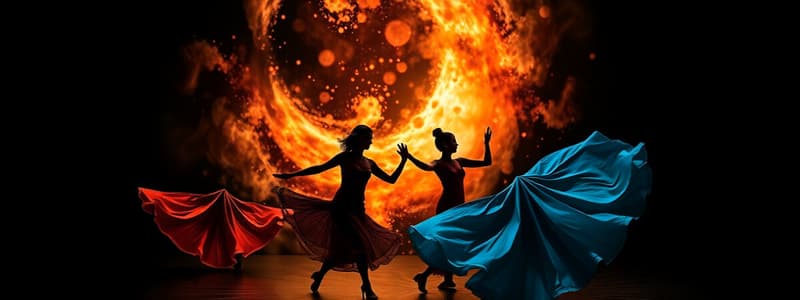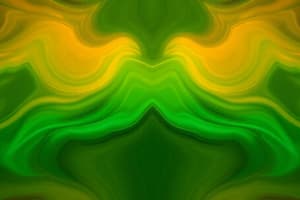Podcast
Questions and Answers
What is rhythm in the context of art and performing arts?
What is rhythm in the context of art and performing arts?
- A measure of the complexity of a design
- The pattern created through repeated elements and movements (correct)
- A style of painting characterized by vibrant colors
- The use of contrasting colors in artwork
What distinguishes formal rhythm from informal rhythm?
What distinguishes formal rhythm from informal rhythm?
- Formal rhythm applies to music only, informal rhythm applies to visual arts
- Formal rhythm involves uniform arrangements, informal rhythm includes variations (correct)
- Formal rhythm has variations in motifs, while informal rhythm is uniform
- Formal rhythm is instinctively felt, while informal rhythm is calculated
Which factor does NOT influence visual weight in a composition?
Which factor does NOT influence visual weight in a composition?
- Texture & Detail
- Size
- Color
- Proportion (correct)
Which type of rhythm suggests movement across multiple directions in a design?
Which type of rhythm suggests movement across multiple directions in a design?
What creates a feeling of rest or stability in a visual composition?
What creates a feeling of rest or stability in a visual composition?
Flashcards are hidden until you start studying
Study Notes
Rhythm in Art
- The principle of rhythm is felt quickly and is fundamental to performing arts.
- Rhythm is evident in painting, architecture, music, dance, and poetry.
- Rhythm is a visual or auditory pattern created by repeated shapes, elements, colors, sounds, and movements.
- Rhythm is created by the repetition of a unit or motif.
- Repetition of a movement creates a feeling of movement or rhythm.
- All structural elements can be repeated to suggest movement.
- Not all movements in a design are rhythmical.
- Border design involves units moving in one direction.
- Surface or all-over pattern involves units moving in two directions.
- When units are of the same size and distances from one another, rhythm is observed.
- Rhythm is classified into formal and informal.
- Formal rhythm involves a uniform repetition of a motif.
- Informal rhythm involves variation in the form, size, and arrangement of the motif.
Balance in Art
- Balance is a quality that gives a feeling of rest, equilibrium, or stability.
- It is the visual weights of lines, forms, values, textures, and colors.
- Visual weight gains and holds attention.
- It is the perceived importance or heaviness of an element within a composition.
- Factors that influence visual weight are:
- Size
- Color
- Contrast
- Texture & Detail
- Position
- Shape
Studying That Suits You
Use AI to generate personalized quizzes and flashcards to suit your learning preferences.



